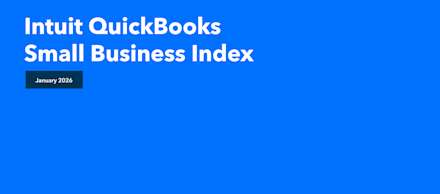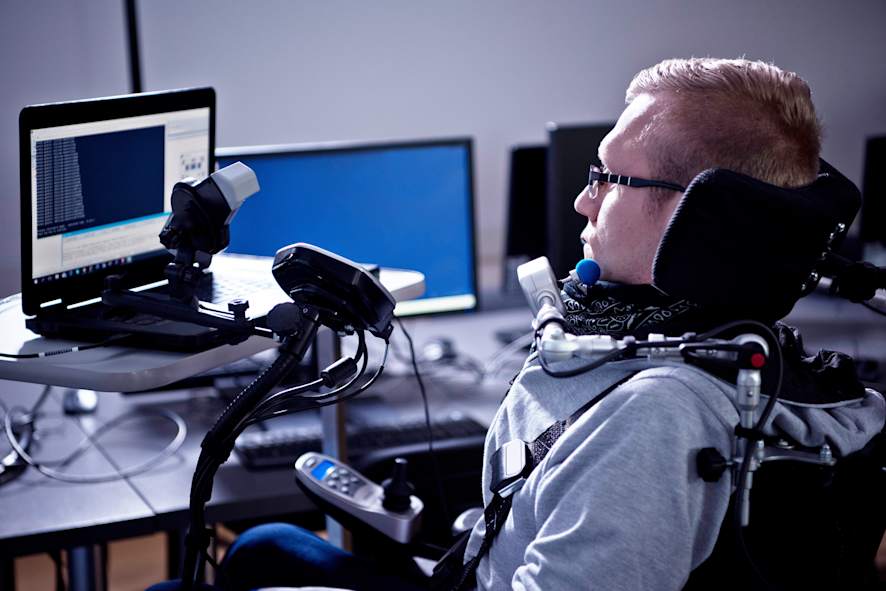
Intuit QuickBooks Small Business Index, January 2026
Simple, smart accounting software - no commitment, cancel anytime

WORKING IN THE CLOUD
With 20% of adults having some form of disability, and 80% of disabled people of working age, this community makes up a huge potential workforce who can bring brilliant creativity and resourcefulness to a job. However, 75% of disabled people say that UK businesses’ digital products and services are not designed well enough for them, so businesses have some way to go in making their products and services available to all customers.
One thing we are really keen to do at QuickBooks is constantly improve our products and services. We’re proud to say that we are proactively working towards making our products more accessible for all – whether that is for someone with a disability, or for those experiencing temporary issues which may impact their interactions with our tools.
It’s not only people with long term accessibility issues that may need accessible tools - solving an accessibility challenge can have unexpected upsides for everyone. For example, by ensuring a product is available for those who are unable to hear permanently, it also makes it available for those who are temporarily unable to hear (because of an ear infection, for example), or situationally unable to hear (such as a bartender in a busy bar).
In the current skills shortage, businesses should be jumping at the chance to attract this untapped customer base, whilst also improving their diversity and inclusion credentials, by providing a service that meets the widest range of needs.
The spectrum of those who require accessible products could range from those who are colour blind, to those who are neuro-divergent, have ADHD, dyslexia, autism, dyscalculia, dyspraxia, or even those who don’t speak English as their first language. All these people will have different needs, and it is vital that design teams plan for every eventuality.
The British Standards Association classifies inclusive design as the design of mainstream products and services that are accessible to, and usable by, as many people as reasonably possible on a global basis, in a wide variety of situations and to the greatest extent possible without the need for special adaptation or specialised design.
With this in mind, incorporating accessibility into design at the beginning of the product journey is the best way to ensure it is fit for purpose for all. In addition to the product being accessible you need to make as much of the full user journey as accessible as possible. So ensure your website, help articles, videos and the ability to contact customer support teams, are also accessible by design.
With BASDA stats showing that 76% of users will abandon inaccessible sites, at an estimated £17 billion loss for those businesses, keeping users in the journey is not just a nice to have – it’s a necessity.
There are multitudes of benefits to building products accessibly, from boosting profits to outperforming competitors. Being an advocate for equality, diversity and inclusion also helps unlock the potential of those with inclusive needs and gives customers a voice, building their brand loyalty.
At QuickBooks, we’re committed to be working on building accessibility into our new products from the beginning. HMRC is to extend the mandatory deadline for Making Tax Digital (MTD) for Income Tax Self-Assessment (ITSA) from April 2024 to April 2026, in which most businesses will need to send a quarterly summary of their business income and expenses to HMRC using MTD-compatible software. Part of the hope for this is that there will be more accessible software available.
As MTD for ITSA is aimed at the individual rather than businesses, there is a likelihood that the end user will need to have an accessibility need met - we are working towards building our tool for income tax self-assessment, and from the beginning accessibility has been front and centre to the design brief.
I recently chatted to Andrew, one of our accountant customers who went blind later in life, who uses QuickBooks for his customers. He said:
“When I went blind 8 years ago, I unfortunately found I was unable to work at my former Practice and had to give up my chartered accountant job. However, with the help of Voiceover Screen Reading facilities that come as standard on Apple products, I was able to start up my own Bookkeeping and accountancy business.
This sparked my search for accessible accountancy software to use for my customers, and I soon found that QuickBooks had the ability to fulfil my needs - I have now been a customer for seven years. In my opinion, I find the vast majority of QuickBooks products accessible for my purposes and Intuit staff are on hand to assist me and use my feedback to make improvements. This has massively changed my life and the way I can work. The feeling of being able to effectively do the job that I love once again is indescribable!”
It’s cases like Andrew’s that really bring home how important accessibility is, not just from a business perspective but for the individual. In many cases, providing accessible products can be life-changing.
Image credit: © Dob’s Farm - stock.adobe.com
Feel you’re better informed about accessibility? The QuickBooks blog covers a wide range of business-related topics – it’s all part of our mission to help small businesses grow.
Subscribe to get our latest insights, promotions, and product releases straight to your inbox.
9.00am - 5.30pm Monday - Thursday
9.00am - 4.30pm Friday